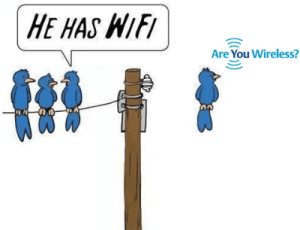Stephen Hire is Vice President, Asia Pacific for Cobham Wireless with responsibility for the Company’s sales, marketing, support and strategy for the APAC market. In this article Stephen introduces us to a wireless world of connected devices and how Customers, business and Internet Of Things(IoT) Interact with each other
The IoT is being billed as the ‘Fourth Industrial Revolution’ and will herald a truly mobile connected society, enabling a huge range of use cases for personal, industrial and business applications. This will include connected lifestyle and healthcare applications such as wearable technology, smart energy, public infrastructure, greater efficiency in manufacturing processes, and connected cars for both safety and driver convenience.
The large manufacturing volumes expected for these low-complexity, non-speech devices means that the main challenge will be to reduce the cost of test and maximise throughput, while ensuring that any critical performance parameters are still being accurately validated. Multiple standards and technologies will be used to connect the IoT, so there will be no universal test solution for IoT devices. 2G/EGPRS, Weightless-N, and proprietary low-power radio technologies and protocols are already being used for Machine-to-Machine (M2M) communications, and the market has been accelerating. One of the largest growth areas for IoT prior to the launch of 5G is expected to be in LTE. 3GPP has introduced the low-power LTE Cat-0 standard with Release 12, and this, along with the new LTE-M standard being launched within Release 13, will enable lower-cost, lower-power M2M devices to work within the currently available cellular networks. Two other IoT standards – EC-GSM (Enhanced Coverage GSM) and NB-IoT – are also being introduced at Release 13. Fast and flexible multi-standard, multi-device test systems like PXI Maestro are likely to provide a convenient route towards manufacturing test of low complexity IoT terminals.
The cellular networks that are being expanded to include IoT will also need new kinds of testing, and the effect of loading the network with millions of these devices will need to be validated. Although individual devices may not need much bandwidth, with millions more devices coming online the efficiencies of 4G and 5G will be needed to increase the overall capacity of the network in order to be able to handle them. The availability of network validation tools that emulate realistic data usage scenarios has been vital to the development and rollout of LTE, and in the future it will be equally important to include the characteristics of the predicted volume of IoT devices in the traffic models in order to ensure quality of service (QoS) and quality of user experience (QoE) as 5G networks develop. The philosophy of ‘testing by design’ will provide the wireless industry with the blueprint to begin developing this framework, and this will necessitate the use of a validation environment based on virtualised network functions that can apply realistic scenarios for all types of ‘users’ – consumers, businesses and ‘Things’.

The latest generation of the TM500 network test system already has the capability to emulate tens of thousands of M2M/MTC devices, to evaluate the effect on the network of connecting large numbers of these low-power, low-complexity devices. This helps network operators and infrastructure vendors to validate 4G cellular network performance in preparation for deploying IoT connectivity.
The accelerating development of 5G is partly being driven by a demand for expanding M2M communications to enable many new IoT use cases, including those such as automotive applications or remote surgery, where the need for low-latency and high-reliability cannot be met by existing standards.
Looking to the future, 4G, 5G and legacy cellular will all form part of the eventual IoT mix. Many IoT devices need to operate indoors, so issues of in-building penetration need to be addressed as well. New architectures and frequency bands may be needed to improve indoor coverage. A mixture of heterogeneous networks (HetNets) using small cells, WiFi offload, and more innovative indoor coverage solutions such as intelligent digital DAS (idDAS) – which allows mobile operators to use flexible repeater solutions to dynamically allocate capacity within buildings or areas – is expected to form part of the solution. Software-defined networks utilising network function virtualization (NFV) and self-optimising networks (SON) will increasingly be used by operators to help make networks more flexible and responsive to changes in demand. They will form an integral part of the development of the IoT, and in managing network resources to cope with the extra traffic that it will generate.












